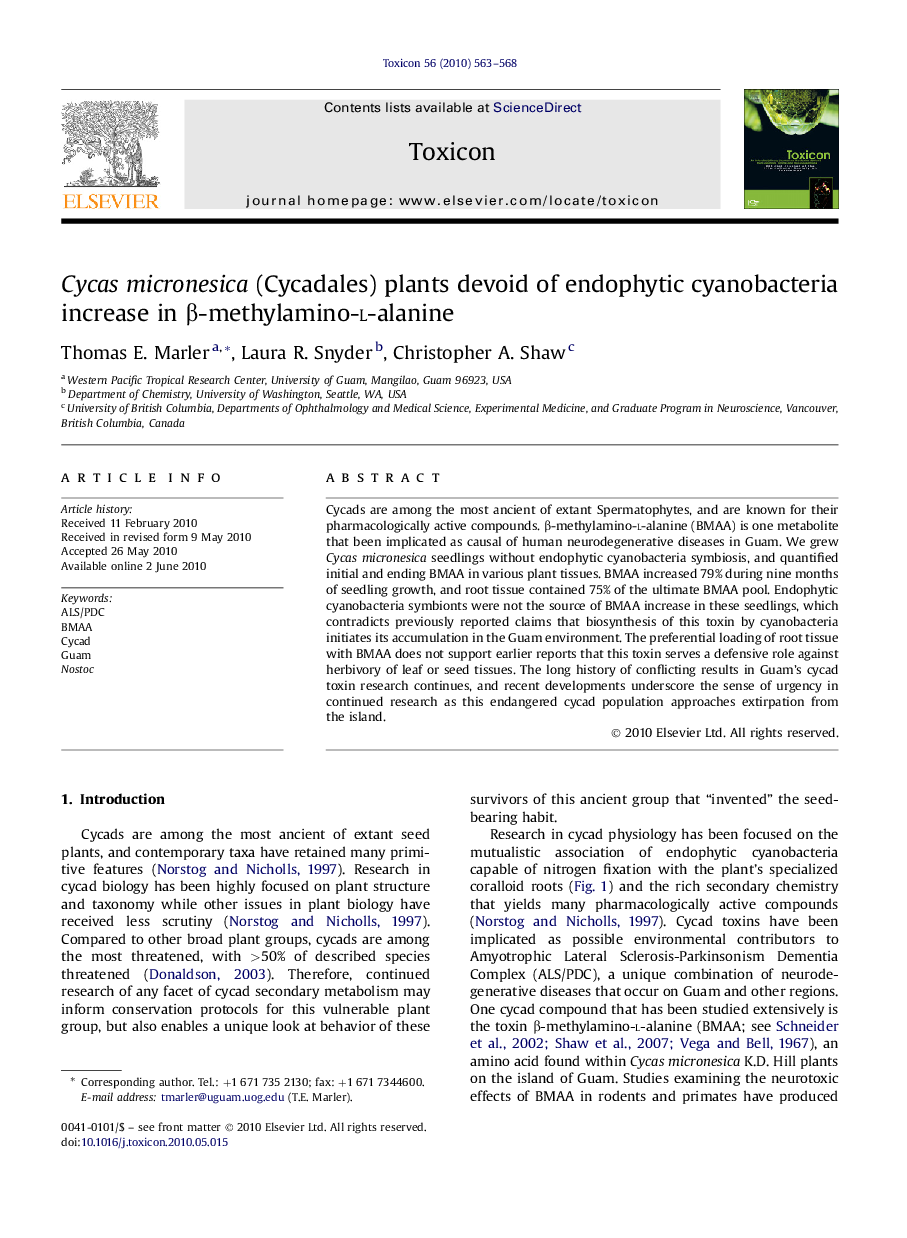| Article ID | Journal | Published Year | Pages | File Type |
|---|---|---|---|---|
| 2065134 | Toxicon | 2010 | 6 Pages |
Cycads are among the most ancient of extant Spermatophytes, and are known for their pharmacologically active compounds. β-methylamino-l-alanine (BMAA) is one metabolite that been implicated as causal of human neurodegenerative diseases in Guam. We grew Cycas micronesica seedlings without endophytic cyanobacteria symbiosis, and quantified initial and ending BMAA in various plant tissues. BMAA increased 79% during nine months of seedling growth, and root tissue contained 75% of the ultimate BMAA pool. Endophytic cyanobacteria symbionts were not the source of BMAA increase in these seedlings, which contradicts previously reported claims that biosynthesis of this toxin by cyanobacteria initiates its accumulation in the Guam environment. The preferential loading of root tissue with BMAA does not support earlier reports that this toxin serves a defensive role against herbivory of leaf or seed tissues. The long history of conflicting results in Guam’s cycad toxin research continues, and recent developments underscore the sense of urgency in continued research as this endangered cycad population approaches extirpation from the island.
